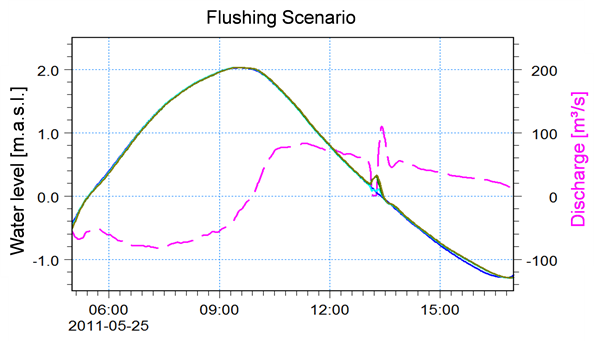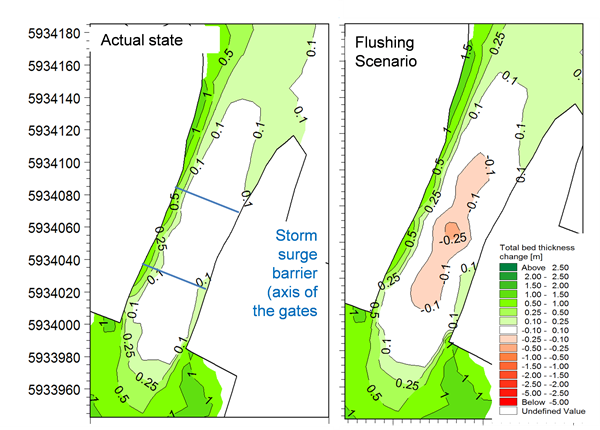In the 2011 incident, the gate wing of storm surge barrier Estemündung was lifted out of the lower bearing, causing the overlying bascule bridge to be torn from its anchorage at the valve tip. During the closure process, the gate passed highly-compacted sediment deposits at the bottom and was lifted off its lower bearing.
In order to avoid future high sedimentations in the storm surge barrier, HPA launched an investigation together with engineering company Sellhorn Ingenieurgesellschaft mbh and DHI-WASY. During the investigation, the hydro-morphological effects of an optimised flushing operation were developed.
We used MIKE 3 Flow Model (FM) – a calibrated 3D numerical model – to simulate the Este river and the Elbe Estuary. This model included the detailed structures and operation of all lock gates. The modelling revealed that a closing and re-opening near the low water (figure 1) has a stronger remobilsation effect than on other tidal phases. A slower gate operation reduced down- and up-surges near the gate.
 |
Figure 1: Tidal water level upstream and downstream of the barrier (right axis) and discharge (magenta, right axis)
for a flushing scenario. © DHI |
The study provided two different recommendations on the frequency and type of operations to allow sediment remobilisation in the central part of the barrier (figure 2). Currently, a testing phase for the flushing with the barrier combined with a monitoring process is being conducted by the HPA.
 |
Figure 2: Morphological change in the storm surge barrier due to flushing scenarios compared to the actual state
after 34 days (total bed thickness change in m). © DHI |
Sediment management for barriers or hydraulic structures like dams is a challenge for stakeholders all over the world. Our work in this project shows that numerical simulations combined with a monitoring program can deliver a solution for such challenges.